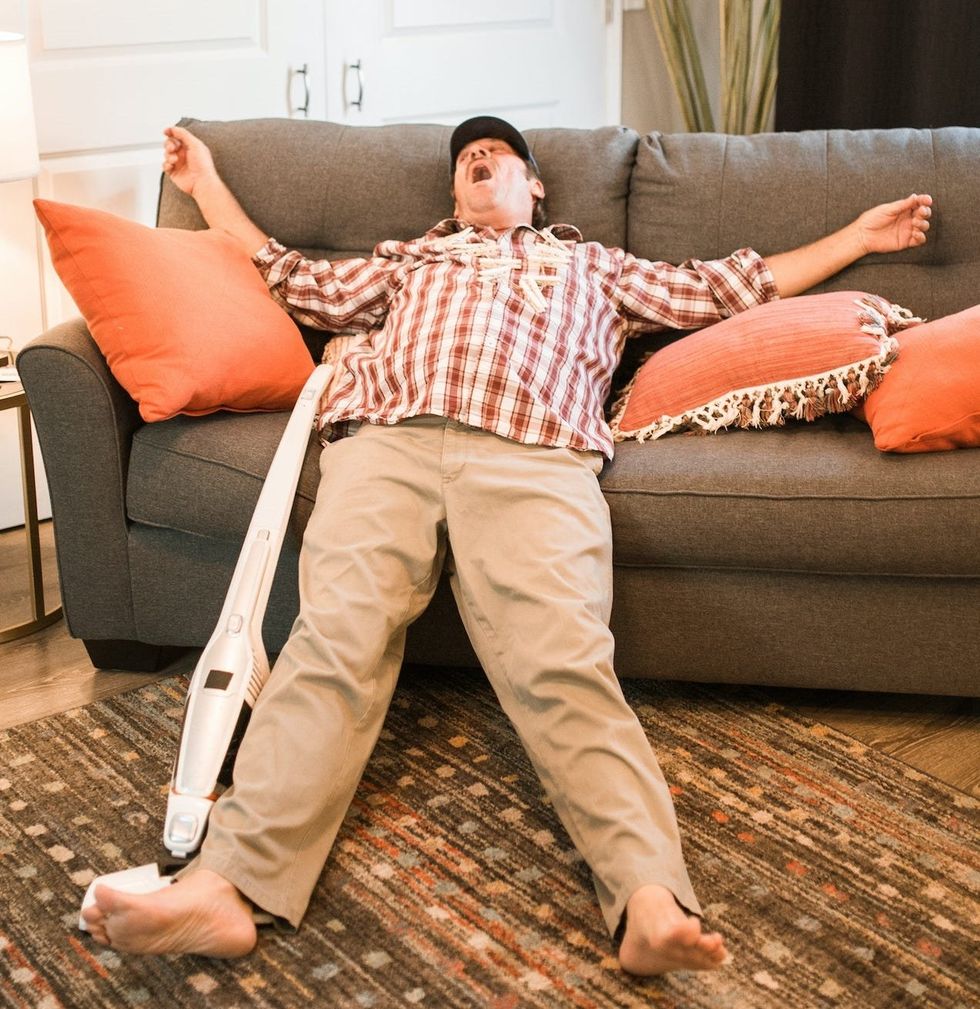What exactly is pain and how do we deal with it?
Pain is a message sent by the body to the brain, signaling the presence of disease, injury or strain. Without pain, you would be unaware of many problems - from torn ligaments to appendicitis. Pain is simply, Mother Nature's way of telling you something is wrong.
Many of us kill the messenger with narcotics, anti-depressants, and tranquilizers that take care of the symptoms, but not the cause of the pain. This kind of treatment cannot only mask symptoms of the serious disease but can also create a cycle of chronic pain.
Not all pain though, serves a useful function. While acute pain, as described above can alert us to a serious problem, chronic pain can linger long after an ailment or injury has healed in the body. Examples of chronic pain include backache, migraines, and arthritis. In these cases, pain management, as opposed to a cure, may become the goal of treatment.
The psychological effects that accompany recovery from a disease or injury heighten chronic pain. A loss of confidence is often triggered by prolonged periods of rest and inactivity that cause a loss of physical strength, endurance, and flexibility. If the injury has prevented you from performing your usual duties, you may succumb to frustration and depression. Impatience is chronic pain's best friend as many individuals overexert themselves before they have completely healed, thus triggering more pain.
Various treatments can help alleviate chronic pain.
Some treatments do so on a purely physical level by interfering with signals from the nerves to the brain or desensitizing the nerves. The following sections are meant to introduce you to some of the ways of dealing with pain without relying on non-steroidal anti-inflammatories, narcotics, tranquilizers or anti-depressants.
For many people, particularly those in the western world, pain relief solutions such as acupuncture, and herbal medicine are novel concepts. However, the rest of the world is probably wondering what the fuss is about because these traditional approaches to pain relief have been around for thousands of years; Traditional Chinese Medicine, which relies on various techniques and herbs in order to balance the body's internal energy, is over 5,000 years old.
Acupuncture: the ancient Chinese Practice of acupuncture is based on the belief that health is determined by the level of chi (vital life energy) that is in the body. This energy is thought to move through the body through pathways called meridians, which connect to specific organs in the body. Acupuncturists insert needles into points on the body that connect to these channels to release blocked "chi" that might be the cause of pain.
During an acupuncture treatment, the acupuncturist inserts thin needles for anywhere from a few minutes to a half an hour into specific points on the body. This practice is thought to stimulate endorphins, the body's natural painkillers and is useful for the treatment of a variety of disorders including backache, sinus pain, jaw pain, spinal disorders, withdrawal, and mental disorders.
Herbs: another important part of traditional Chinese medicine is herbal medicine. Herbs have been used for centuries for their pain relieving qualities.
Here are some herbs that are recommended for common disorders:
Cramps & Spasms: angelica, cramp bark, kava, rosemary, valerian root.
Nerve Pain: capsaicin, chamomile, Gotu Kola, licorice, white willow, yarrow.
Back Pain: hops, wood betony, passionflower.
Migraine: feverfew, linden, skullcap.
Headaches: peppermint, spearmint.
Joint pain: ginger, sea cucumber, yarrow.
Meditation:
meditation, which has also been practiced for thousands of years, is a conscious attempt to calm the mind so that it is not cluttered with thoughts and anxieties that might be contributing to an unnecessary belief in the existence of pain. There are hundreds of different meditation techniques, but mostly they all into three categories: concentrative, mindful and transcendental meditation. During concentrative meditation, focusing on a single sound, object or one's breath, produces tranquil mind that facilitates the production of pain-relieving endorphins. During mindful meditations, the mind is encouraged to become aware of, but not reactive to thoughts, feelings, and sensations in order to achieve a tranquil state of mind.
Nutrition:
Eating a well-balanced diet that includes fresh fruits and vegetables is thought to be the best way to raise your pain threshold or resistance to pain. A deficiency in any of the main vitamins (A, B, C, D or E) can cause chronic pain. Vitamin E is used to treat joint pain. A deficiency in calcium, iron, magnesium and other minerals may also lower your pain threshold. A calcium magnesium supplement is taken in a 2:1 ratio of calcium to magnesium is thought to relieve joint pain and headaches. Manganese is a vitamin that is sometimes used for chronic headaches and neuralgia. A deficiency of the B vitamins is also thought to cause nervousness, headaches and chronic pain.
Aromatherapy:
Sniffing or applying essential oils is thought to change an individual's brain chemistry so that pleasurable neurotransmitters called endorphins are released to relieve pain. Geranium, jasmine, juniper, lavender, peppermint, rose, rosemary and thyme are oils commonly used for this purpose.
Guided Imagery:
Research has indicated that bodily functions that were previously thought to be beyond conscious control, such as chronic pain, can be controlled through the use of visualization. Guided imagery encourages the sufferer to think in pictures that eliminate negative thoughts thus raising levels of pleasurable brain chemicals, such as serotonin, decreasing anxiety and increasing the effectiveness of the immune system. Through guided imagery, the mind conjures up mental scenes in order to better direct the body's energy. For instance, if an individual is suffering from a stabbing pain, he or she might want to imagine a knife being removed from the spot and a subsequent glowing feeling of relief. Guided imagery has been used successfully to manage the pain of headaches, sinus problems, arthritis, and cancer.
Biofeedback:
Biofeedback combines a variety of relaxation methods, such as guided imagery and meditation with the use of instruments that monitor the individual's responses to the therapy. After many treatments, biofeedback is thought to train the individual to consciously regulate autonomic functions such as heart rate, blood pressure and other processes that are commonly believed to be out of our control. During a session, electrodes connected to a monitoring unit are taped to the skin. The monitor measures skin temperature, pulse, blood pressure, muscle tension, and brain activity to determine the success of the relaxation technique. Eventually, over time, biofeedback can train an individual to control the pain of such disorders like TMJ, headaches, and migraines.
Conclusion:
It is difficult to imagine a world without pain; where would our poetry come from? What would divas sing about? Given that pain is probably always going to be a part of our world, it is of critical importance that we understand the various methods that exist to manage that pain. For some of us, that remedy may lie in the traditional realm, while for others it will be through prescription drugs or some other alternative. Regardless of what remedy you choose, make sure you inform yourself of the various pain treatment options open to you, and by doing so, you may just reduce the amount of suffering in your life. And isn't that, in some respect, the goal that we all strive towards?
It is important to note that the above suggestions do not represent cures for conditions, but more represent strategies and opportunities to manage your chronic pain. It is also recommended that you consult with your health practitioner before embarking on any new pain management program.




 Going to the cinema alone is good for your mental health, says science
Going to the cinema alone is good for your mental health, says science












 women in street dancing
Photo by
women in street dancing
Photo by  man and woman standing in front of louver door
Photo by
man and woman standing in front of louver door
Photo by  man in black t-shirt holding coca cola bottle
Photo by
man in black t-shirt holding coca cola bottle
Photo by  red and white coca cola signage
Photo by
red and white coca cola signage
Photo by  man holding luggage photo
Photo by
man holding luggage photo
Photo by  topless boy in blue denim jeans riding red bicycle during daytime
Photo by
topless boy in blue denim jeans riding red bicycle during daytime
Photo by  trust spelled with wooden letter blocks on a table
Photo by
trust spelled with wooden letter blocks on a table
Photo by  Everyone is Welcome signage
Photo by
Everyone is Welcome signage
Photo by  man with cap and background with red and pink wall l
Photo by
man with cap and background with red and pink wall l
Photo by  difficult roads lead to beautiful destinations desk decor
Photo by
difficult roads lead to beautiful destinations desk decor
Photo by  photography of woman pointing her finger near an man
Photo by
photography of woman pointing her finger near an man
Photo by  closeup photography of woman smiling
Photo by
closeup photography of woman smiling
Photo by  a man doing a trick on a skateboard
Photo by
a man doing a trick on a skateboard
Photo by  two men
two men  running man on bridge
Photo by
running man on bridge
Photo by  orange white and black bag
Photo by
orange white and black bag
Photo by  girl sitting on gray rocks
Photo by
girl sitting on gray rocks
Photo by  assorted-color painted wall with painting materials
Photo by
assorted-color painted wall with painting materials
Photo by  three women sitting on brown wooden bench
Photo by
three women sitting on brown wooden bench
Photo by 
 Photo by
Photo by  Photo by
Photo by  Photo by
Photo by  Photo by
Photo by 


 people sitting on chair in front of computer
people sitting on chair in front of computer



 all stars lol GIF by Lifetime
all stars lol GIF by Lifetime two women talking while looking at laptop computerPhoto by
two women talking while looking at laptop computerPhoto by  shallow focus photography of two boys doing wacky facesPhoto by
shallow focus photography of two boys doing wacky facesPhoto by  happy birthday balloons with happy birthday textPhoto by
happy birthday balloons with happy birthday textPhoto by  itty-bitty living space." | The Genie shows Aladdin how… | Flickr
itty-bitty living space." | The Genie shows Aladdin how… | Flickr shallow focus photography of dog and catPhoto by
shallow focus photography of dog and catPhoto by  yellow Volkswagen van on roadPhoto by
yellow Volkswagen van on roadPhoto by  orange i have a crush on you neon light signagePhoto by
orange i have a crush on you neon light signagePhoto by  5 Tattoos Artist That Will Make You Want A Tattoo
5 Tattoos Artist That Will Make You Want A Tattoo woman biting pencil while sitting on chair in front of computer during daytimePhoto by
woman biting pencil while sitting on chair in front of computer during daytimePhoto by  a scrabbled wooden block spelling the word prizePhoto by
a scrabbled wooden block spelling the word prizePhoto by 






